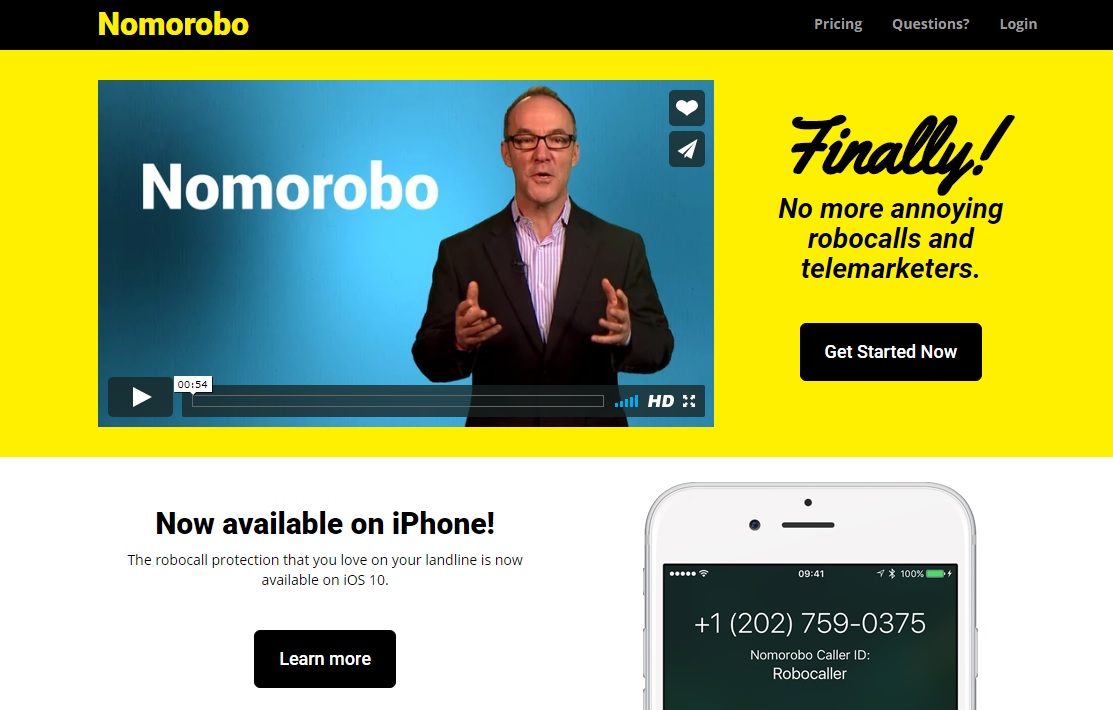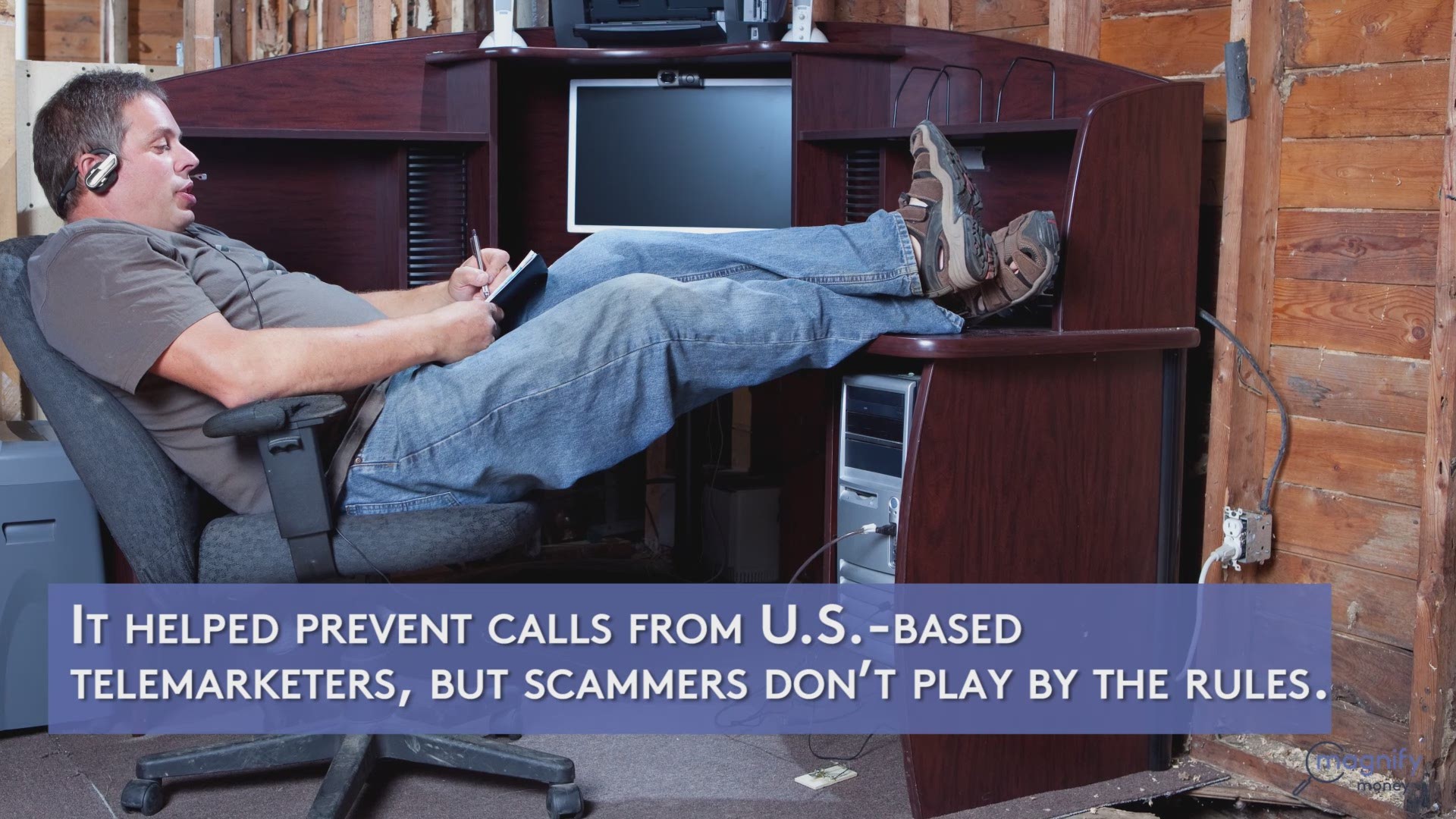If you're afraid to answer your phone, you're hardly alone. Spam calls have become so common that they've basically rendered the "phone" part of “smartphone” useless. Or at least, very dumb. But help might, finally, be on the way.
The Do Not Call list, which debuted in 2004, was perhaps the most popular program operated by the U.S. government in decades — 50 million numbers were entered before the list even took effect. Since then, another 170 million numbers were entered into the registry. U.S. telemarketers quickly learned to abide by the list or face multi-million dollar fines the Federal Trade Commission could impose — and there have been more than 100 enforcement actions.
It worked...for a while. But the combination of internet-based telephones and cheap long-distance calls have made it easy for telephone scofflaws to operate overseas, far beyond the reach of U.S. authorities. Unwanted calls have returned with a vengeance, making some wonder if the Do Not Call list works at all.
How bad is the problem? A firm called YouMail Inc. tries to count the number of robocalls that pester Americans, and the statistics are staggering. YouMail claims that 2.5 billion unwanted calls were placed just in April 2017, equaling 7.7 calls per person.
For fun, YouMail breaks down its data by ZIP code, and found that Atlanta wins for most robocalls received, with about 50 million placed just to the 404 area code in April. Another 35 million arrived at Atlanta’s 678 area code. Houston and Dallas area codes came in second and third. New York City's 917 area code was fifth, with 29 million.
The robocall problem has been intractable for a series of reasons — mainly, because it makes the criminals who run scams like fake IRS debt collection like these a lot of money. But two other technology reasons stick out.
Criminals can “spoof” caller ID numbers.
First, it's become easier for criminals to "spoof" caller ID numbers. That not only keeps consumers from blocking numbers, it can also make them more likely to answer. Calls that appear to come from the recipient’s own area code — or even share the same first six digits of their phone number — suggest a local call, so consumers are tempted to answer.

The telecom industry has a hard time stopping suspicious calls.
Second, the telecom industry has avoided implementing technology that would stop many suspicious calls because the firms claim they are legally required to connect calls, and they don't have the authority to decide what is spam and what isn't.
Years of frustration and consumer complaints finally nudged the Federal Communications Commission toward action last year, and it created the Robocall Strike Force. In August, tech heavy hitters like AT&T, Google, and Microsoft gathered in Washington, D.C., to discuss ideas.
Then in March, with the FCC under new leadership, Chairman Ajit Pai indicated he would go ahead with proposals from the task force. Specifically, he would call for a change in rules that explicitly gave telecom firms the right to cut off spammers.
"Under my proposal, the FCC would give providers greater leeway to block spoofed robocalls. Specifically, they could block calls that purport to be from unassigned or invalid phone numbers — there’s a database that keeps track of all phone numbers, and many of them aren’t assigned to a voice service provider or aren’t otherwise in use," he wrote in a Medium post explaining the change. "There is no reason why any legitimate caller should be spoofing an unassigned or invalid phone number. It’s just a way for scammers to evade the law."
Later in March, the FCC approved the proposal. The work isn't done, however. There's now a public comment period; a vote to enact the new rules won't happen until later this year. Then there will be a transition period as carriers implement their spoofed-call-blocking technologies.

How to stop unwanted spam phone calls
Relief is in sight, but it's not time to turn your ringtone back on just yet. For now, consumers can investigate third-party services like Nomorobo ($2/month, iPhone only, see a review here) or Hiya (free, see iTunes reviews here) that claim to help by using blacklists and other methods to identify spam callers. Some providers and smartphones offer their own free call-blocking options, but they are cumbersome to use. Consumers can Google phone numbers that call, just to see if others have complained online about them. Or simply keep screening those calls for a bit longer.
MagnifyMoney is a price comparison and financial education website, founded by former bankers who use their knowledge of how the system works to help you save money.

